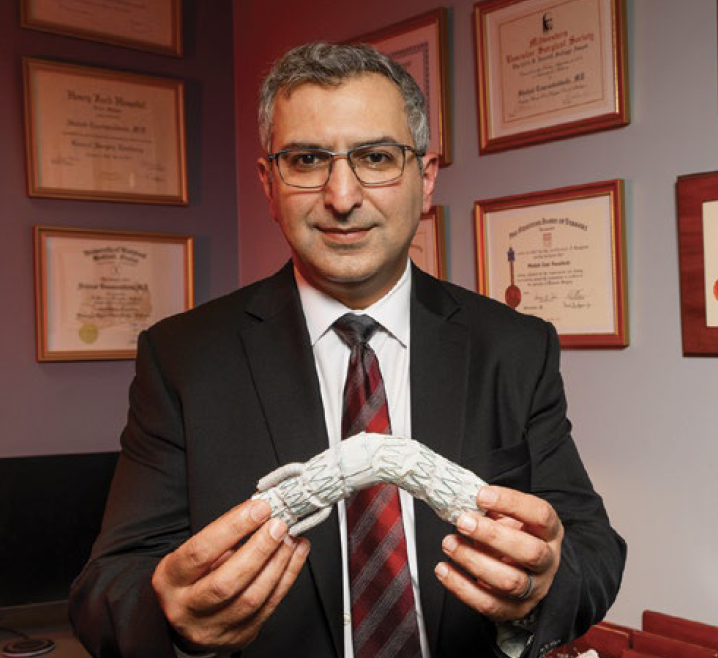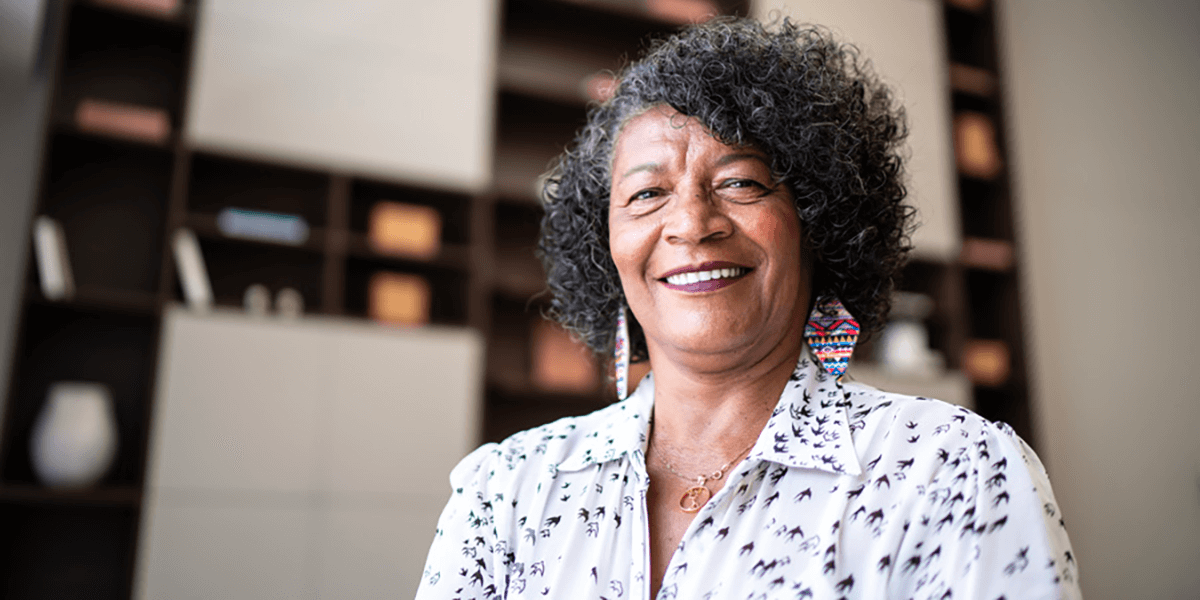Partner Content
“Aortic disease can be deadly, but if treated properly, you can have a normal life.”

Dr. Shahab Toursavadkohi is a vascular surgeon specializing in aortic disease. This is a unique field where many physicians bring their expertise together to improve patients’ health and surgical outcomes. Here, Dr. Toursavadkohi explains aortic disease, the innovative treatments being pioneered at University of Maryland Medical Center, and how everyone can keep their heart healthy.
For those who don’t know, what is aortic disease?
To explain aortic disease I must first explain the aorta, the large artery that essentially is the pipeline that connects the entire body. The aorta has multiple branches because it has to go to different organs—the head and neck, legs, kidneys, liver, essentially everything. Like any pipeline, it carries a high-pressure system, in this case your blood, so one of the big risk factors for aortic disease is high blood pressure. Over time, the aorta can dilate and develop an aneurysm, or dissect and become injured. Or, you can get atherosclerosis disease, which can narrow the arteries, making it difficult for blood to flow. Any disease that affects this large artery known as the aorta can be potentially deadly, because if it malfunctions, the circulation to your entire body is disrupted. The strain of disruption in the pipeline is like you’re choking the whole body of its blood flow.
Can you speak about some of the pioneering, minimally invasive treatments you and your team are currently doing at the Center for Aortic Disease?
Since I took over the aortic center in 2016, my mission has been to improve access to minimally invasive surgeries. Aortic diseases are pretty common in our state because unfortunately, we have lots of patients who don’t have good access to primary care, which means risk factors like diabetes, high blood pressure, and high cholesterol are not managed very well. If you want to try to treat these aortic diseases with a traditional open surgery, some people will not be qualified for that because they’re too old or too sick to tolerate it. Even if patients tolerate those procedures, these are massive surgeries that require hours of operation, days in the ICU, weeks in rehab, and months to recover. The advantage of minimally invasive surgery is you can expand the treatment to more patients because it’s less of a surgery. Lots of frail, older people can tolerate minimally invasive surgery, and the recovery is much faster so we can get people back to work, back to their families, and back to their life and routines. We look carefully at every aspect of aortic surgery to design strategies to minimize the surgery for patients.
Collaboration is a big part of the treatment model at the Center for Aortic Disease; why is this multi-disciplinary approach so important?
We have cardiac surgeons and cardiologists on the team. These minimally invasive procedures are not something that one surgeon completes; it has to be a team of surgeons. Endovascular aortic surgery is like assembling a Lego house inside a box; the reason is because the devices we implant are usually very bulky, so you have to break them down in pieces. Each piece has to go in one by one from a different angle. For example, I put a big piece in and another surgeon comes from the right arm and adds one more piece so that we are all working, without opening the body, from different points of entry to access and repair the aorta. It’s really magical.
What are the common causes of aortic disease, and do you have recommendations for how readers can keep their heart and vascular system healthy?
High cholesterol is really detrimental to the heart and it’s also bad for the aorta. But what is really worse for the aorta is high blood pressure because it creates significant tension in the aortic wall. As you age, your tissue becomes more fragile. So if you have hypertension, and you’re getting older, it’s a bad combination—at some point the aortic valve is going to give way. The other risk factor that we don’t talk about enough is family history. If your family history includes aneurysm—even second or third generation—that is very important. The nice thing about aortic disease is if you get it treated, you can carry on with your life. The key is to identify and treat it properly, and then you should be able to have the same life expectancy as a person who doesn’t have aortic disease.

MEET THE EXPERT:
Shabab Toursavadkohi, MD
Associate Professor of Surgery
Co-Director
Center for Aortic Disease
University of Maryland Medical Center
University of Maryland Medical Center
410-328-4771
umm.edu/cad

